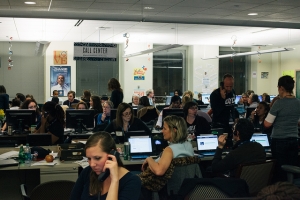Support migrant centric journalism today and donate

 • Watch This Video
• Watch This VideoFollowing all the rules, Indian national Sanjay Mehta came to the United States on a temporary work visa in 1997, hoping to build a glittering career in the fast-moving information technology sector.
But nine years later his application for a green card remains snarled up in a bureaucratic logjam, and he looks with frustration at the strides made by illegal immigrants who he says simply jumped the fence from Mexico.
"Washington has taken notice of them ... But what about the plight of legal immigrants to this country? We seem to have been forgotten," said Mehta, who settled in Arizona with his wife and raised two children.
Many of the estimated 10 million to 12 million illegal immigrants in the United States are hopeful of gains from a new Democrat-led Congress next year, after massive street protests in U.S. cities pushed their cause to the top of the political agenda earlier in the year.
But more than a million legal immigrants like Mehta from as far afield as Europe, India and China complain that their lives have been placed on hold as they battle red tape to become permanent residents in the United States.
Many are highly skilled, with science, electrical engineering and medical degrees, and are hired by U.S. companies, universities and research laboratories under a strict visa system with an annual cap of 65,000.
Those that get through into the United States then face a wait of up to 12 years for an employment-based green card, in a process that damages their professional lives and may even jeopardize U.S. competitiveness, immigrants, employers and analysts say.
Lives Left In Limbo
All high-skilled immigrants seeking U.S. residency in 2004 had a college degree or better, and many would ordinarily be on a fast track career in research departments, hospitals and technology firms where they work across the United States.But under the terms of the residency application they are tied to the job that they came into the country on, and face the prospect of watching colleagues advance while their lives remain on hold, advocates say.
"The long wait throws high-skilled professional immigrants' lives in limbo," said Aman Kapoor, the founder and president of Immigration Voice, a national grassroots organization representing skilled immigrants across the United States.
"They are not able to move to better job opportunities in the prime period of their career, which is very professionally frustrating for them," said Kapoor, an Indian national who works as a programmer analyst at Florida State University.
Others complain they face additional problems generated by the uncertain outcome of their residency application, including difficulty obtaining mortgage credit and even car loans.
"My wife has a masters in child psychology and has taught for more than 20 years in schools in Nigeria, but here she isn't allowed to work," said Kola Akinwande, a Nigerian database administrator based in Phoenix who has been waiting two years for a green card.
"I also have to pay out-of-state tuition fees for my son to study at university here, which puts an additional financial burden on the family," he added.
Jobs Left Unfilled
The process has been slowed down yet further since the September 11 2001 attacks, as lengthy background checks by the FBI can add two to three years to the already drawn-out process.The immigration logjam is not just a headache for the foreign-born professionals and their families, who face repeated knock-backs in the long and uncertain path to residency.
Some U.S. employers, especially in the technology sector, where global competition is fierce, are also concerned that they are prevented from hiring the best and the brightest, who they need to keep ahead of the curve.
Microsoft says it currently has 4,000 to 5,000 technical posts it cannot fill at its research facilities in the Puget Sound area, while Texas Instruments has more than 200 vacancies for specialists to design, develop and test integrated circuits and semiconductors.
"The problem is that the U.S. education system is not producing enough people with a math, science or engineering background to fill these vacancies, so we are having to look outside," said Jack Krumholtz, Microsoft's chief lobbyist in Washington.
For employers and immigrant advocates, the solution includes raising the annual cap on H1B non-immigrant work visas to allow more skilled immigrants into the country, and speeding up the residency process to break the logjam.
Analysts warn that failure to do so could lead immigrants with sought-after skills to head for other countries like Australia, Canada and Britain, where the process is more streamlined.
"Unless this problem is corrected, the U.S. will be viewed by the best professionals as an unreliable place to build a career and have a family," said Stuart Anderson, the director of the National Foundation for American Policy think-tank.
But for Sanjay Mehta, any overhaul would come too late. Weary of delays and knock-backs, he packed up his life in Arizona, and took his wife and two U.S.-born children to start again in Britain.
"I feel like I wasted nine years of my life," he said.





















